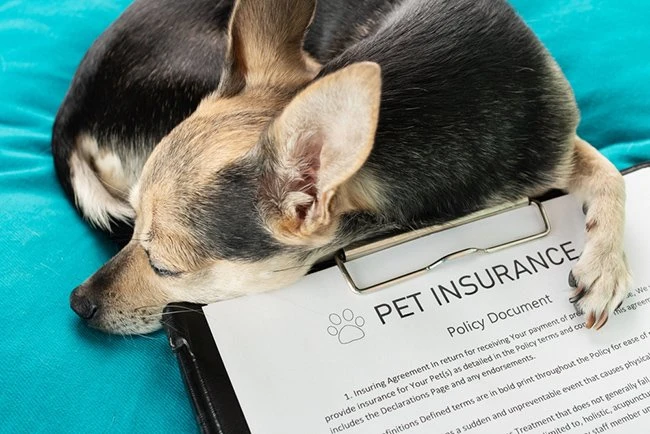
As the pet care industry grows, so does the need for specialised insurance that caters to the unique risks associated with pet sitting. Whether you’re a seasoned professional or just starting out, choosing the right pet sitting insurance is crucial. It not only protects you from unexpected liabilities but also builds trust with your clients. Pet Business Insurance plays a pivotal role in safeguarding your business against a range of potential issues, from accidents to legal disputes. In this guide, we’ll explore the key elements to consider when selecting the right insurance policy to ensure you’re fully covered in every scenario.
The Importance of Pet Sitting Insurance
Pet sitting is more than just a job; it’s a responsibility that involves significant risks. Without proper insurance, you could face substantial financial losses from unexpected events. Here’s why investing in tailored pet sitting insurance is essential:
- Risk Management: Pet sitting involves interacting with animals whose behaviour can be unpredictable. From accidents during walks to incidents involving other pets, insurance helps manage the financial implications of such risks.
- Client Assurance: Having comprehensive insurance reassures clients that you are prepared for any eventuality. It demonstrates professionalism and can be a decisive factor in gaining and retaining clients.
- Financial Protection: Without insurance, you could be liable for costs related to property damage, personal injury, or legal claims. Insurance provides a financial safety net, ensuring that you can cover these costs without jeopardising your business.
Key Coverage Areas for Pet Sitting Insurance
Choosing the right insurance policy means understanding the different types of coverage available and how they apply to your specific needs. Here’s an overview of the key coverage areas:
- Public Liability Insurance: This is a fundamental aspect of pet sitting insurance. It covers claims for injury or damage caused by the pets in your care. For example, if a dog you’re walking injures someone or damages property, public liability insurance will cover the costs associated with the claim.
- Professional Indemnity Insurance: This coverage protects you against claims of negligence or errors in the advice and services you provide. If a client alleges that you made a mistake in the care of their pet, professional indemnity insurance helps cover legal fees and potential compensation.
- Contents Insurance: As a pet sitter, you may use various equipment and supplies. Contents insurance covers loss or damage to these items, such as pet carriers, grooming tools, and other equipment essential for your business.
- Employers’ Liability Insurance: If you have employees or assistants, this insurance is legally required. It covers claims from employees who suffer injuries or illnesses as a result of their work, including medical costs and compensation for lost earnings.
Steps to Select the Right Insurance Policy
Selecting the right insurance policy involves a series of thoughtful steps. Here’s a guide to help you make an informed choice:
- Assess Your Needs: Start by evaluating the specific risks associated with your pet sitting business. Consider factors like the number of pets you care for, the types of services you offer, and whether you have any employees. This assessment will guide you in choosing the appropriate coverage.
- Research Providers: Not all insurance providers offer the same level of coverage or service. Compare different insurers, their policies, and customer reviews. Look for providers with a solid reputation in the pet care industry and those offering tailored coverage for pet sitting.
- Consult Experts: If you’re unsure about the details of various insurance options, seek advice from an insurance broker who specialises in pet care. Their expertise can help you navigate the complexities of insurance and find a policy that suits your needs.
- Understand Policy Terms: Carefully read and understand the terms and conditions of the policy. Pay attention to exclusions, limits, and the process for making claims. Ensuring that you fully comprehend your coverage will help avoid surprises when you need to make a claim.
Avoiding Common Pitfalls
When choosing pet sitting insurance, avoid these common pitfalls to ensure you’re getting the best protection for your business:
- Underestimating Coverage Needs: It’s important not to undervalue the level of coverage required. Inadequate coverage can leave you exposed to significant financial risks. Be thorough in assessing your needs and choose a policy that provides comprehensive protection.
- Ignoring Policy Exclusions: Policies often come with exclusions that outline what is not covered. Understanding these exclusions helps you avoid unexpected gaps in coverage. For example, some policies may exclude certain types of damage or incidents.
- Overlooking Renewal and Updates: Insurance policies need to be reviewed and updated regularly. As your business evolves, your coverage needs may change. Regularly reviewing your policy and making necessary adjustments ensures that you remain adequately protected.
Tips for Maintaining Effective Coverage
Securing insurance is just the beginning. To ensure that your coverage remains effective, follow these tips:
- Review Your Policy Annually: Regularly review your insurance policy to ensure it continues to meet your needs. This review helps you stay updated on any changes in coverage or policy terms.
- Keep Accurate Records: Maintain detailed records of your business operations, including client interactions, incidents, and insurance documentation. Accurate records can support your claims process and demonstrate your commitment to risk management.
- Stay Informed: Keep up with industry developments and changes in insurance regulations. Staying informed helps you make timely adjustments to your coverage and ensures that you remain compliant with any new requirements.
Real-World Examples of Insurance in Action
Understanding the practical applications of insurance can illustrate its importance. Here are some real-world scenarios:
- Scenario 1: Dog Bite Incident: While walking a dog, it bites a passerby, resulting in medical treatment and a legal claim. Public liability insurance covers the medical expenses and legal fees, protecting you from significant financial liability.
- Scenario 2: Property Damage: A pet in your care damages a client’s furniture. Contents insurance helps cover the cost of repairs or replacement, ensuring that you can handle the financial impact without disrupting your business.
- Scenario 3: Dispute Over Care: A client disputes the quality of care provided and files a complaint. Professional indemnity insurance helps cover legal costs and potential compensation, allowing you to address the dispute without severe financial repercussions.
Navigating the complexities of pet sitting insurance may seem daunting, but with the right information and careful consideration, you can secure the protection your business needs. By understanding the key coverage areas, selecting the appropriate policy, and maintaining effective coverage, you can confidently manage your pet sitting business, safeguard your finances, and ensure peace of mind for both you and your clients. Embrace insurance as an integral part of your business strategy and focus on delivering exceptional care for the pets you love.



